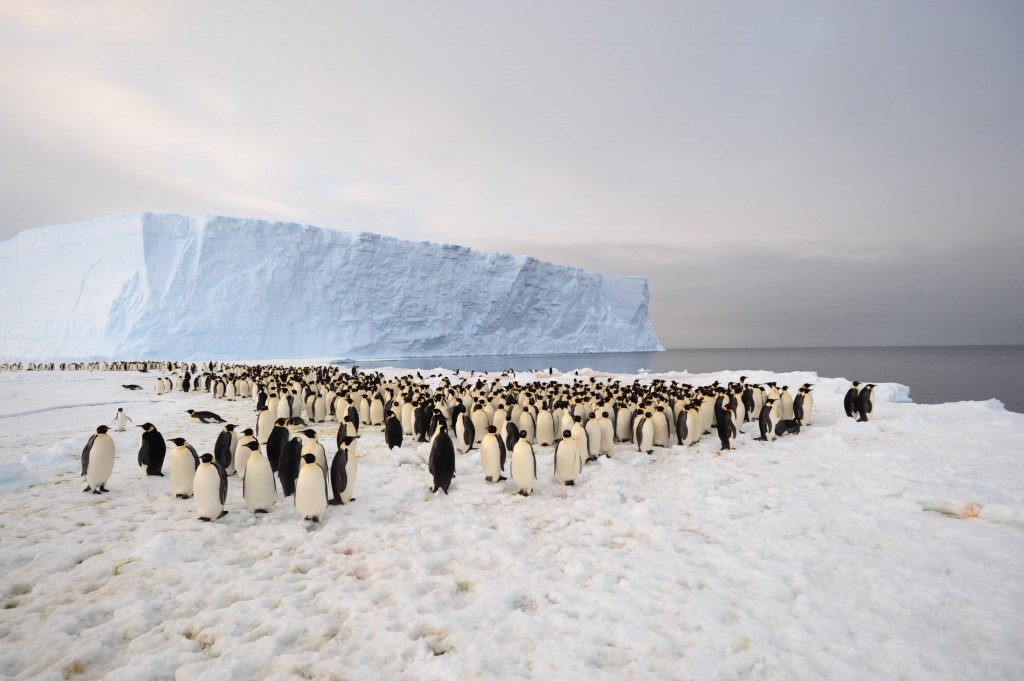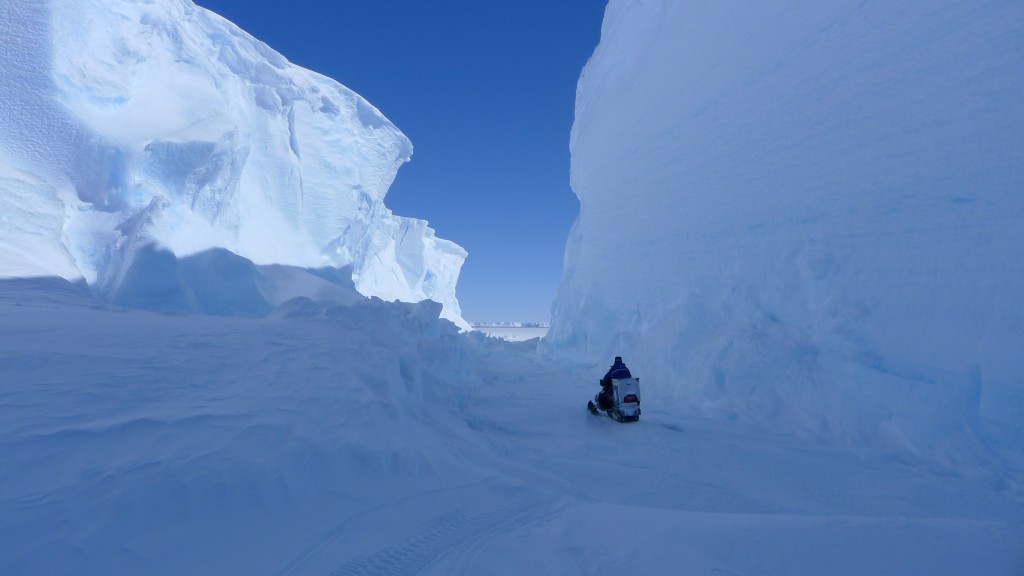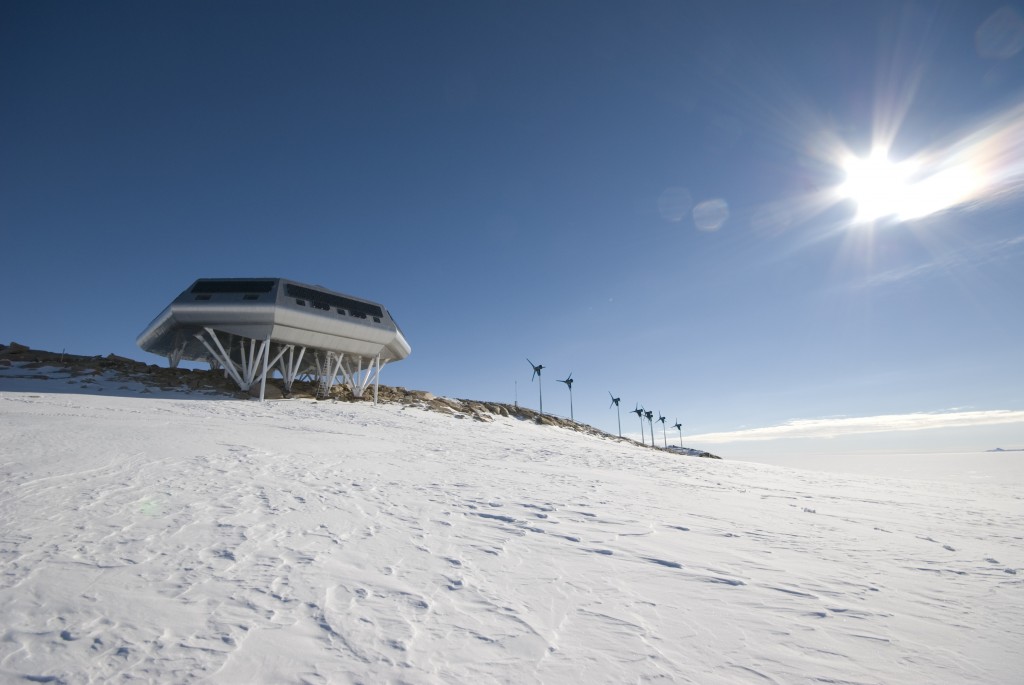Antarctic Peninsula is thawing faster
Ice in parts of the Antarctic Peninsula is now melting during the summer faster than at any time during the last thousand years, according to new research results. The scientists have reconstructed changes in the intensity of ice-melt, and the mean temperature on the northern Antarctic Peninsula since AD 1000, based on the analysis of ice cores.
According to the study, published in the journal Nature Geoscience, the coolest conditions and lowest melt occurred from about AD 1410 to 1460, when mean temperature was 1.6 °C lower than that of 1981–2000. Since the late 1400s, there has been a nearly tenfold increase in melt intensity from 0.5 to 4.9%. The warming has occurred in progressive phases since about AD 1460, but the melting has intensified, and has largely occurred since the mid-twentieth century. The study concludes that “ice on the Antarctic Peninsula is now particularly susceptible to rapid increases in melting and loss in response to relatively small increases in mean temperature”.
Paul Brown of Climate News Network says the findings explain a series of sudden collapses of ice shelves in the last 20 years, which scientists studying them had not expected. He also quotes the researchers as saying the current melting could lead to “further dramatic events, making the loss of large quantities of ice on the Peninsula more likely, and adding to sea level rise”.
The study is also of interest against the background of the debate going on over the last 20 years on whether the Antarctic would gain mass through extra snow falling and so REDUCE sea level rise, or would lose ice because of higher sea and air temperature and so exacerbate the effect.
The scientists use a 364-metre ice core from James Ross Island to get in insight into both past temperatures and ice melt. Layers in the core show periods when summer snow on the ice cap thawed and then refroze. By measuring the thickness of the layers, they could tell how the history of the melting related to changes in temperature at the site over the last thousand years.
Lead author Dr. Nerilie Abram of the Australian National University and the British Antarctic Survey (BAS) said: “Summer melting at the ice core site today is now at a level that is higher than at any other time over the last 1,000 years. And whilst temperatures at this site increased gradually in phases over many hundreds of years, most of the intensification of melting has happened since the mid-20th centrtury.
Dr. Robert Mulvaney from the BAS, who led the drilling expedition and co-authored the paper said: “Having a record of previous melt intensity for the Peninsula is particularly important because of the glacier retreat and ice shelf loss we are now seeing in the area. Summer ice melt is a key process that is thought to have weakened ice shelves along the Antarctic Pensinsula leading to a succession of dramatic collapses, as well as speeding up glacier ice loss across the region over the last 50 years”.
The changes on the Antarctic Peninsula do not necessarily apply to other parts of Antarctica, such as the West Antarctic ice Sheet. Melting is also occurring there and could have an even greater risk of large-scale sea level rise.
Paul Brown from Climate News Network notes “it is not clear that the levels of recent ice melt and glacier loss in West Antarctica are exceptional or are caused by human-driven climate changes.”
Lead author Abram says: “This new ice core record shows that even small changes in temperature can result in large increases in the amount of melting in places where summer tempearatures are near to 0°C, such as along the Antarctic Peninsula, and this has important implications for ice instability and sea level rise in a warming climate”.
I interviewed Andrew Shepherd, Professor of Earth Observation at the British University of leeds, on a major satellite sutdy of the polar ice melt towards the end of last year. It makes interesting listening to complement this latest development:
Interview with Andrew Shepherd
See also:
Polar ice sheets melting faster than ever
Are warming seas changing the Antarctic ice?
Photo gallery: High season for Antarctic researchers
China to step up polar activities in 2013
I am finding people increasingly interested in the Arctic and Antarctic as climate change opens up more prospects of getting at the natural resources in the region or using it for transport. The latest example of top-level international interest is an announcement by China. Beijing is planning to launch its 30th expedition to the Antarctic region this year as well as its 6th Arctic expedition. This interest is not new, but clearly intensifying. (See China’s Arctic ambitions spark concern).
According to China Daily, quoting a document released at a maritime work conference on Thursday, the country is also planning to build more Antarctic research bases. There are plans to put more resources into planes for scientific expeditions and to “ensure the quality of newly-built icebreakers”.
The paper also refers in particular to “the protection of the country’s strategic interests in the Arctic region”. Now there is some food for thought.
Increasing international political and strategic interest in the Arctic will be on the agenda at the Arctic Frontiers conference in Tromsö, Norway, starting January 21st. Watch this space.
“First foot” for the “space” penguins

Penguins galore – Photographed by the International Polar Foundation team in Antarctica, December 2012
You may remember a report a couple of years ago about how satellite images revealed the existence of a hitherto unknown large colony of penguins in an area of Antarctica. AT that time, researchers from the British Antarctic Survey and the UK National Environment Research Council attracted a fair bit attention with the “penguins from space” story. Now three members of a team from Belgium’s Princess Elisabeth Antarctica polar research station have become the first humans to visit and photograph the colony of around 9,000 emperor penguins on Antarctica’s Princess Ragnhild Coast.
![]() read more
read more
”Tis the Season… to drill ice cores!”

Alain Hubert, expedition team leader for the IceCon and Be:Wise projects investigating the Antarctic ice sheet. Courtesy of International Polar Foundation
As the year draws towards an end, winter officially starts and the longest night is before us here in the northern hemisphere, I have been entranced by photos from the Antarctic, full of light and white and 90 shades of blue. With a holiday break ahead of me, let me direct you to some more of these spectactular pictures and the stories of the hard work behind them, with the scientists from the International Polar Foundation out there examining the ice sheet. As I’ve been writing here on the Ice Blog recently, the Antarctic is also being affected by climate change, but to a different extent in different places. We only know this thanks to the work of scientists like Reinhard Drews and others who make their way down there and carry out the hard work.

Glaciologist and InBev-Baillet Latour Antarctic Fellowship recipient Reinhard Drews installing a GPS station on the Roi Baudoin ice shelf as part of the Be:Wise scientific project. (Copyright: International Polar Foundation)
A happy new year to you scientists out there in the field – and all ice blog followers. More from me on January 9th!! Comments welcome in the meantime.
More snow less ice in the Antarctic

Princess Elisabeth Antarctica, Belgium’s research station
Copyright Ren̩ Robert РInternational Polar Foundation
Regular ice blog followers may remember a recent post including an Interview with Andrew Shepherd from Leeds University, UK, about ice melt in the Antarctic. One of the factors he explained was that increasing precipitation as a result of warming was falling on the East Antarctic ice sheet as snow and so increasing its mass. Although that particular study showed that the Antarctic has indeed been losing ice over the past 20 years, (contrary to popular opinion), increasing snow was balancing this loss to some extent. Now a study published in Nature shows that a lot of the ice increase from this snow is being lost again, because the extra snow puts pressure on the ice, making it flow faster towards the coast.
![]() read more
read more























Feedback